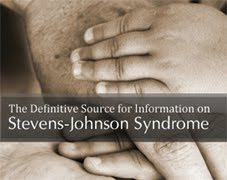 As influence ranks and scoring systems continue to creep into social networks, there is an interesting shift in how people are defining online leadership. In some cases, the same people who sought to tear down authoritarian styles are erecting a similar model based on varied sets of algorithms.
As influence ranks and scoring systems continue to creep into social networks, there is an interesting shift in how people are defining online leadership. In some cases, the same people who sought to tear down authoritarian styles are erecting a similar model based on varied sets of algorithms. While I've often considered the definition more complex than the organizational leadership model developed by psychologist Kurt Lewin in the 1930s, his model works well enough to illustrate the shift. In order to better explain management, Lewin broke out leadership styles into three primary categories: authoritarian, democratic, and laissez-faire.
What early social media entrants aimed to do with blogs and social networks.
Initially, the early adopters who wanted to create a more social net, frequently pointed to and even took aim at what they considered an authoritarian role of various fields. Specifically, many saw big companies, widely-read journalists, and educators as disconnected from the masses they served (or lorded over, as some suggested).
In the Lewin models, he saw autocratic leaders set clear expectations for what needed to be done. These leaders would make decisions with very little input and expected their sphere of influence to follow their lead. From the perspective of early social media entrants, they were controlling and even abusive.
Since the authoritative types were among the last to enter social media (and some still have no desire to do so), it was relatively easy for entrants to call for a revolution. Specifically, they wanted to develop a social model more accustomed to how they viewed government (at least in the United States) — participative like a democratic society.
In a democratic model, new leaders could offer guidance to their group members with each individual member deciding how much they wanted to support their "thought leadership." Ideally, this allowed for new voices to be elevated for their perceived contributions to other early entrants. It worked too, for awhile.
Many even advise adopting this model for businesses today. The general concept is to create environments where customers feel engaged in the process and are more motived, sometimes even promoting the group or organization for the relationship.
What early social media entrants aimed to do with blogs and social networks.
A few years ago, as social networks helped move social media into the mainstream, scalability forced the early social media entrants toward a delegation style of leadership, which Lewin called laissez-faire leadership. The new entrants en masse didn't know what to do.
So they tended to latch onto perceived leaders and were satisfied promoting them without making other contributions (much like a tribe) or perhaps building networks of their own. This was an immediate boon for some of the early entrants because as teachers, they were able to position one-person consultancies as the leaders of online environments.
Perhaps ironically however, laissez-faire leadership isn't as productive and eventually the followers learn on their own. In some cases, longtime leaders in one space were either being left behind or continually threatened for two reasons. First, democratic models do not always ensure you will remain at the top. And second, laissez-faire leadership may be loved by novices but begins to look more authoritative over time.
How algorithms create the illusion of democracies, with a new authoritative construct.
 Most algorithms that measure authority or perceived influence on the Web are based on a combination of three components: activity, popularity, and perceived authority (as a byproduct of the first two). In lieu of education, experience, or expertise, it's based on network size and mention frequency.
Most algorithms that measure authority or perceived influence on the Web are based on a combination of three components: activity, popularity, and perceived authority (as a byproduct of the first two). In lieu of education, experience, or expertise, it's based on network size and mention frequency.Some companies (and social network consultants) won't even respond to people who do not have a specific score, thereby creating a new authoritative anomaly that's largely invented. In one experiment, for example, I created a separate social network account and drove its "influence" score beyond my personal account in the matter of a week. High volume alone spiked the score, but once it hit a certain rank then people blindly followed the account.
While that can become an issue, it seems to me the greater challenge is two-fold. Publics, online or off, have a tendency to erect authoritative structures. And second, those who achieve such status are inclined to protect it, even if they were the ones who were outspoken about the last authoritative structure. It's a cycle of sorts, and frequently occurs even within the most valued democracies.









































